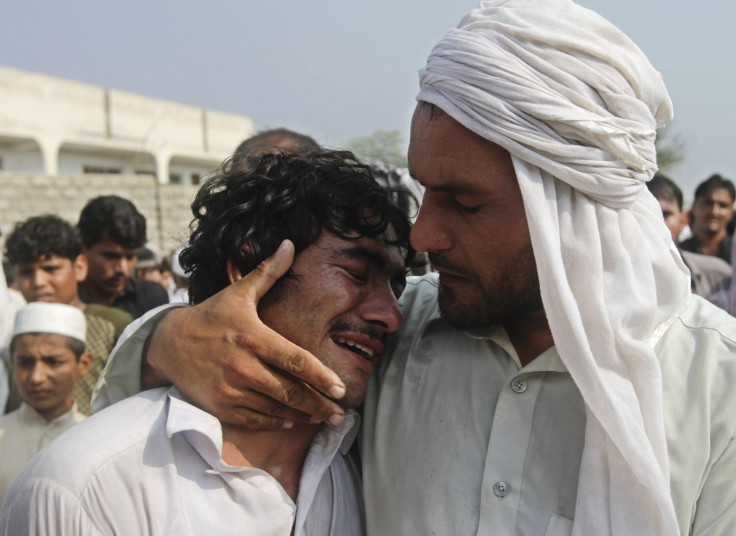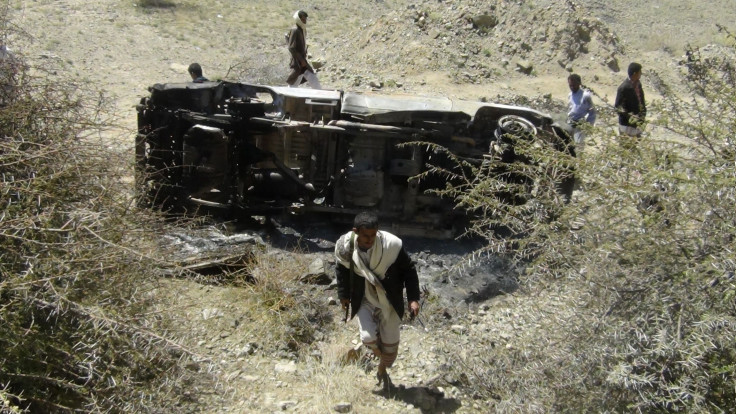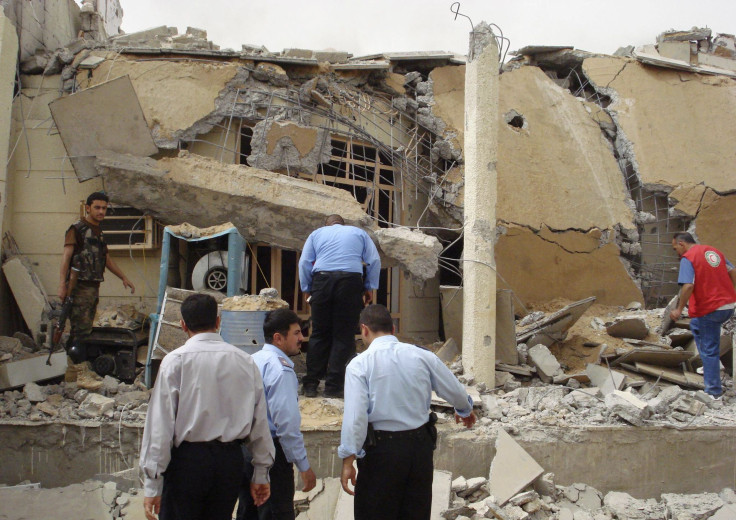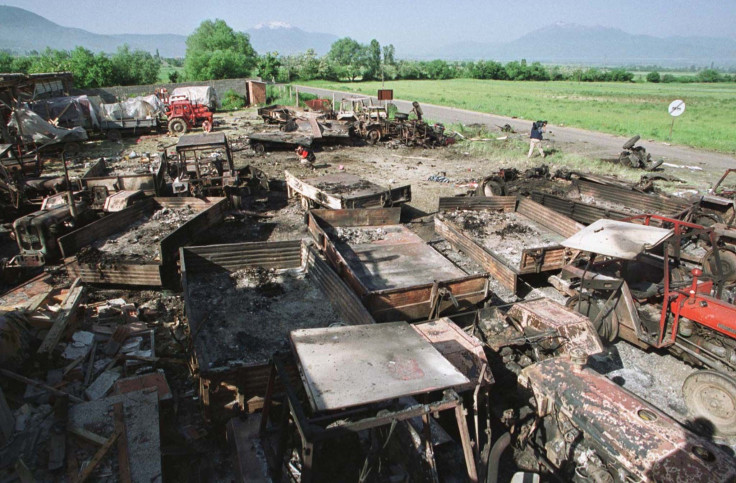Afghan Hospital Airstrike: US Has Long History Of Mistakenly Killing Civilians

These are the words no military commander ever wants to announce: “The hospital was mistakenly struck.” But during a senate hearing Monday, Gen. John Campbell, the top U.S. commander in Afghanistan, admitted last week's strike on a Doctors Without Borders hospital in Kunduz, Afghanistan, which killed 32 people, including three children, was an accident.
“We would never intentionally target a protected medical facility,” Campbell said.
But Campbell's admission was not enough to quell international condemnation. U.S. officials were repeatedly asked to explain how and why the airstrike occurred.
The narrative changed from day to day -- first the U.S. claimed it struck the hospital because it wanted to protect U.S. forces on the ground, then it said the Afghan government requested the airstrike because they were under attack by the Taliban.
In the hearing Monday, Campbell altered the U.S. story again. Campbell announced there are now three separate investigations taking place to find out exactly what happened in Kunduz.
The U.S. top commander was not to be cowed. “We continue to take extraordinary measures to protect civilians,” he declared.
But the strike on the hospital in Kunduz was not the first time the U.S. has killed civilians in Afghanistan. The U.S. has a history of aerial military mistakes not only in Afghanistan, but in other countries including Yemen, Iraq, Syria and the former Yugoslavia. It also mistakenly has killed its own soldiers and loyal Afghan soldiers.
Afghanistan
Last year, on June 9, five American soldiers died in Afghanistan during a “friendly fire” exchange between U.S. forces and Taliban insurgents. It was among the deadliest friendly fire incidents in the war in Afghanistan.
The U.S. soldiers were killed when an an American B-1B Lancer dropped two guided bombs onto U.S. and Afghan forces engaged in the firefight. The length of the mission, the terrain and a lack of mission preparation caused the confusion in the battlefield, a report issued by the U.S. Central Command said.
“The key members executing the close air support mission collectively failed to effectively execute the fundamentals, which resulted in poor situational awareness and improper target identification,” the investigating officer, Air Force Maj. Gen. Jeffrey L. Harrigian, said in his report.
“While this complex combat situation presented a challenging set of circumstances, had the team understood their system’s capabilities, executed standard tactics, techniques and procedures and communicated effectively, this tragic incident was avoidable.”

In July 2015, at least 14 Afghan soldiers were killed in a U.S. airstrike on an army checkpoint in the Baraki Barak district of Logar province, south of Kabul, which was under the control of the Taliban.
The district governor, Mohammad Rahim Amin, said the NATO strike was likely a mistake because of poor communication and coordination, the Washington Post reported at the time.
In January of this year, a U.S. drone strike in the lawless border region between Afghanistan and Pakistan killed three hostages, including an Italian, Giovanni Lo Porto, and one American aid worker, Warren Weinstein. The United States launched two drone strikes on the compound, claiming it thought the area was clear of civilians.
Yemen
Fifteen people were killed in Yemen in December 2013 when a drone strike hit a wedding convoy, which was mistaken for an al Qaeda convoy. A Human Rights Watch report said 12 men were killed and 15 people were wounded, including the bride. Local Yemenis blamed the U.S., but the Obama administration has refused to acknowledge the strike despite its massive drone campaign against al Qaeda in the country.

Human rights organizations have continuously called on the U.S. government to scale back its drone campaign against al Qaeda in Yemen because of the rapidly increasing number of civilian deaths.
A classified U.S. cable from January 2010, released by WikiLeaks, showed that the Yemeni government had previously covered up for U.S. targeted killings that had gone wrong.
The cable shows that Ali Abdullah Saleh, the president of Yemen at the time, spoke to U.S. Gen. David Petraeus in 2009 about an airstrike and said: “We'll continue saying the bombs are ours, not yours.”
Iraq And Syria
In 1991, during the Gulf War, the U.S. bombed a complex in the Amiriyah neighborhood of Baghdad. The bombs, which were laser precision-guided, hit the complex and killed 408 civilians. At the time of the bombing, U.S. officials said they hit the complex because they thought it was being used as a command center and accused Saddam Hussein of using civilians as human shields.
Fast-forward to 2014, and things don't appear to have changed.
Both Iraqis and Syrians claim that over the past two years U.S. airstrikes have killed civilians during its campaign to take out the Islamic State group, also known as ISIS. A recent report published by Airwars, a project aimed at tracking the international airstrikes targeting the extremists, suggests 57 airstrikes resulted in 459 civilian deaths.
"Almost all claims of noncombatant deaths from alleged coalition strikes emerge within 24 hours -- with graphic images of reported victims often widely disseminated," the report said.
"In this context, the present coalition policy of downplaying or denying all claims of noncombatant fatalities makes little sense, and risks handing the Islamic State and other forces a powerful propaganda tool."

During the Iraq War, Human Rights Watch compiled a list of civilian deaths. It used several case studies to show the impact of the U.S. air war in Iraq in one year alone. The organization found that airstrikes targeting senior leadership in the Saddam Hussein regime failed many times because of poor intelligence, killing civilians.
In 2007, a video leaked on WikiLeaks showed members of the U.S. Air Force targeting who they thought were al Qaeda operatives in Baghdad, but who were civilians. One of them was a Reuters cameraman.
Former Yugoslavia

During the war in Kosovo in April 1999, the U.S. accidentally bombed refugees on a 12-mile stretch of road between the towns of Gjakova and Decan, killing 73 Albanian civilians. The U.S. and NATO thought the target was a military convoy. Just one month later, NATO bombed the Chinese Embassy in Belgrade, killing three Chinese reporters. The U.S. had intended to bomb the Yugoslav Federal Directorate for Supply and Procurement, a similar-looking complex nearby. President Bill Clinton later apologized for the bombing of the embassy.
Obama And Targeted Killings
In one of the most notorious speeches of his presidency, President Barack Obama said in May 2013 at the National Defense University that the U.S. had compromised some of its fundamental values since the introduction of the War on Terror under former President George W. Bush. He said the U.S., in some instances, needed to make better decisions when it came to foreign policy.
"From our use of drones to the detention of terrorist suspects, the decisions we are making will define the type of nation -- and world -- that we leave to our children," he said.
Obama said the U.S. needed to see that it didn't abuse its drone power in countries like Yemen, but in the same breath said his administration was not ready to give up the benefits of the drone program.
"There is a wide gap between U.S. assessments of [civilian] casualties and nongovernmental reports. Nevertheless, it is a hard fact that U.S. strikes have resulted in civilian casualties, a risk that exists in all wars ... For me, and those in my chain of command, these deaths will haunt us as long as we live," he said.
"But ... to do nothing in the face of terrorist networks would invite far more civilian casualties, not just in our cities at home and facilities abroad, but also in the very places -- like Sanaa and Kabul and Mogadishu -- where terrorists seek a foothold."
In such circumstances, the underlying U.S. military logic may read, "Civilian deaths are an accident waiting to happen."
The alternative, they say, is worse.
© Copyright IBTimes 2024. All rights reserved.











